The global meditation app market is a fast-paced niche that attracts more and more users daily. For reference, revenue from the meditation app segment in the US is projected to show annual growth of 8.03% for the next four years. It means that this industry is not oversaturated yet, and can offer promising opportunities to investors.
You’ve probably already decided to invest in meditation and mindfulness app creation. Now make it happen! In this article, we will present you with a detailed development guide on how to make a meditation app.
Table of content
Meditation Apps: What Are They, And Why Are They So Popular?Features of a Successful Meditation ApplicationTech Stack Needed for Meditation Mobile App Development7 Steps for Successful Meditation App DevelopmentCosts to Make a Meditation App, Unnecessary Expenses to Cut, and Turnaround TimeWhat Things You Should Consider Before Developing a Meditation Mobile AppExamples of Meditation Applications That Went ViralConsider Weelorum as Your Trusted Partner in Developing Your Mobile AppMeditation Apps: What Are They, And Why Are They So Popular?
A meditation app includes soothing audio with affirmations, breathing exercises, and other practices related to yoga and mindfulness. It is like a virtual assistant for relaxing tips that are always at hand. There are several types of these apps, which slightly differ in functionality depending on their intended purpose:
- Mindfulness
- Transcendental
- Walking
- Yoga
- Vipassana
- Zazen, and so on.
Psychological stress is a frequent concern for people of all ages. So what are the strengths of this kind of wellness app? Let’s take a look at why meditation apps like Headspace have become widely used for reducing emotional pressure.
Society is Increasingly Digitized
Most people have at least one computerized device with access to the Internet. But it’s not only about the number of units that can host meditation apps. It’s about the specific mindset that makes individuals choose apps and remote education courses over real-time classes that one has to visit in person. Digitalization continuously contributes to the increasing user base of meditation software solutions.
Society Is Starting to Care For Mental Health More
In truth, society became way more overwhelmed with stress and anxiety in the first place. For one, in 2019, only 11% of adults in the US reported symptoms of depressive disorder. But in 2021, the number was already more than 41%. And this adverse tendency made thousands of individuals start taking care of their mental health.
Mentality cannot keep up with rapid societal changes and the constantly increasing volumes of information. So, nearly half of the population experiences the negative effects of a fast-paced lifestyle. Meditation apps are seen as a solution and a cure to modern challenges, so their popularity skyrocketed.
Meditation Apps Have Gained in Their Functionality
Modern meditation apps are more functional than outdated. They are not just collections of meditations or music but offer extra features that keep users engaged in an app and incentivize subscription purchases.
Features of a Successful Meditation Application
So, how to create a meditation app? Let’s start with the functionality description. An exact combination of functions is difficult to select, even for experienced developers. However, the core features most successful meditation apps share are:
Profile Management
Users are more engaged in using your app if they have a personalized profile. This feature may also incentivize them to subscribe rather than stay a free user.
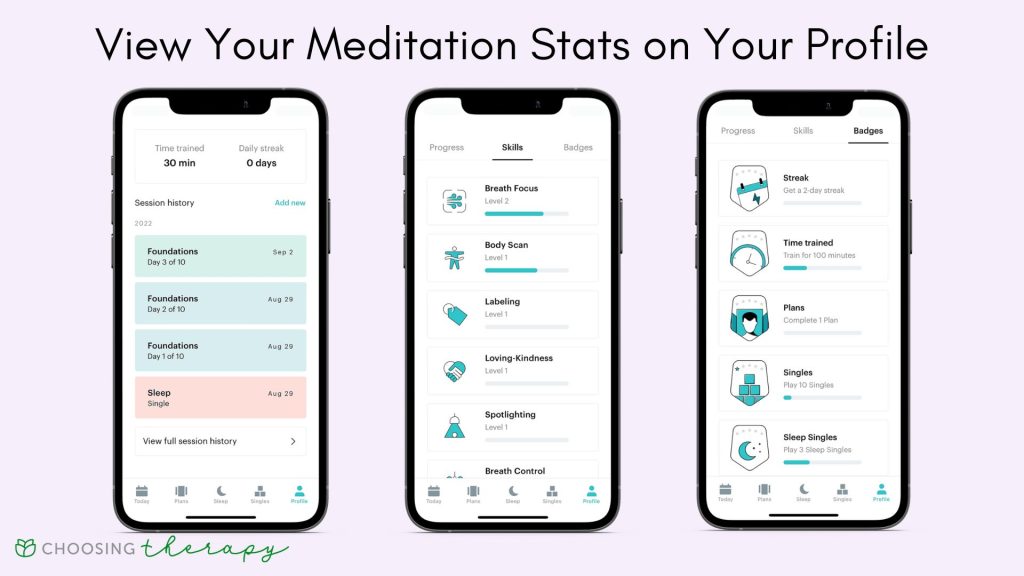
Guided Meditation and Breathing Exercise Lessons
These are the core forms of content that any meditation app must offer. After all, users purchase subscriptions to lower their stress levels rather than scroll through well-designed pages.
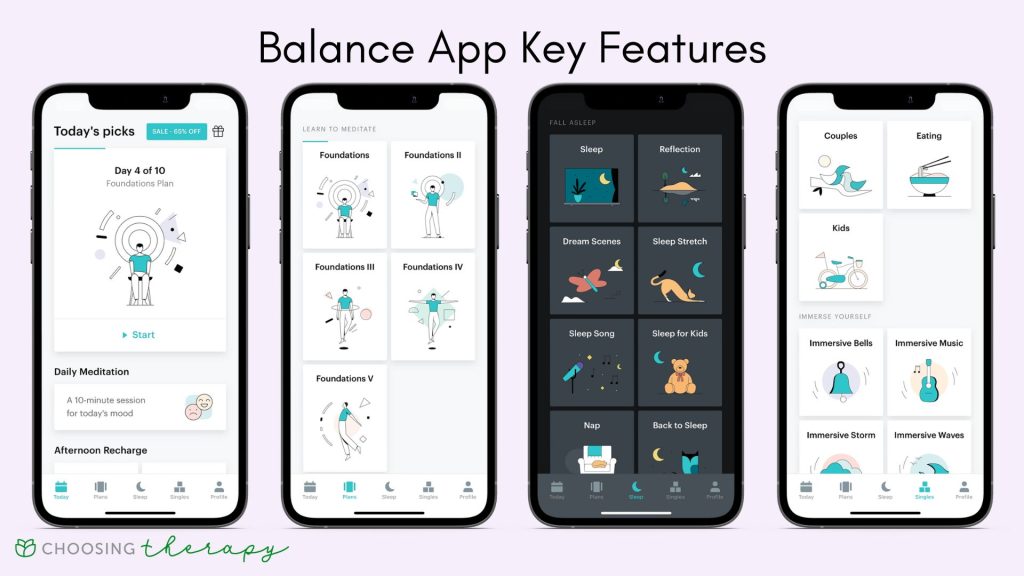
Library of Meditation Videos, Tracks, and Sleep Stories
Libraries complement meditation lessons and help users get instant relaxation. They also create a perfect background for healthy sleeping.
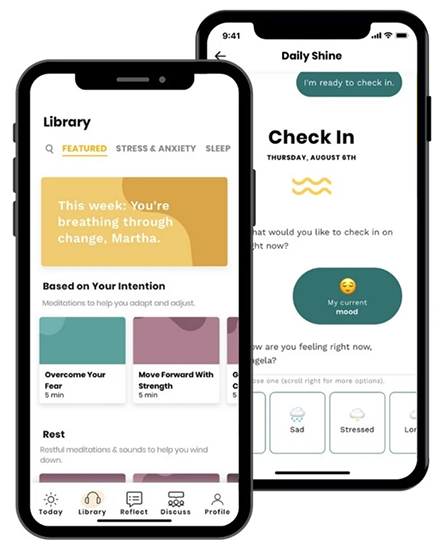
Progress Tracking Feature
Integrate a progress-tracking functionality so that users can evaluate how well they perform with your app. This feature will also increase your app’s retention rate.
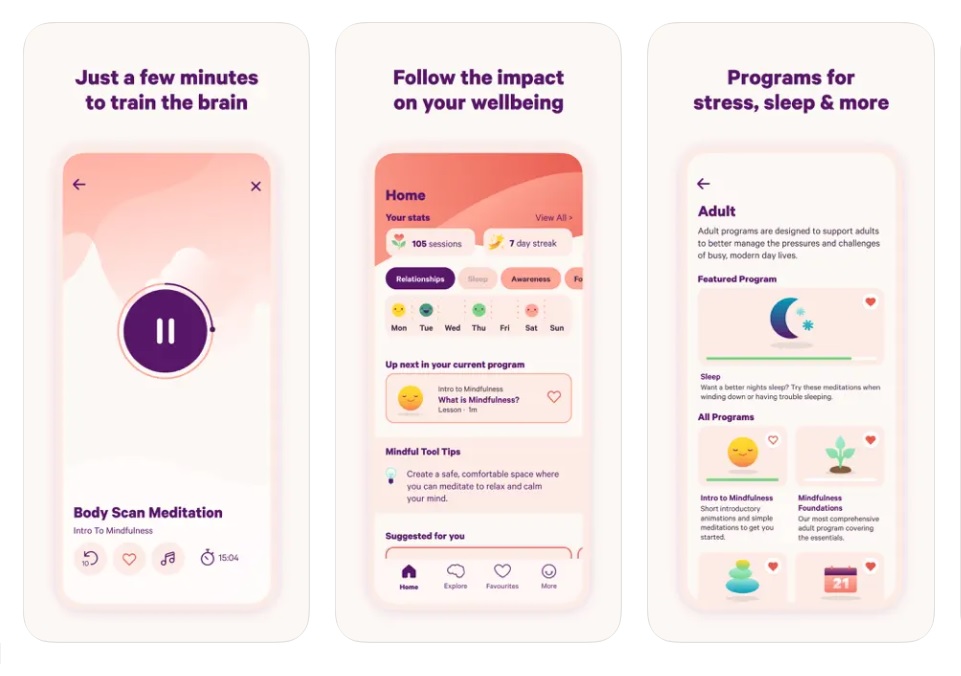
Meditation Sessions and Video Consultations
This innovative feature spreads like wildfire now. Many teachers are willing to sell their courses or conduct private lessons. All you need is to connect service providers with their buyers.
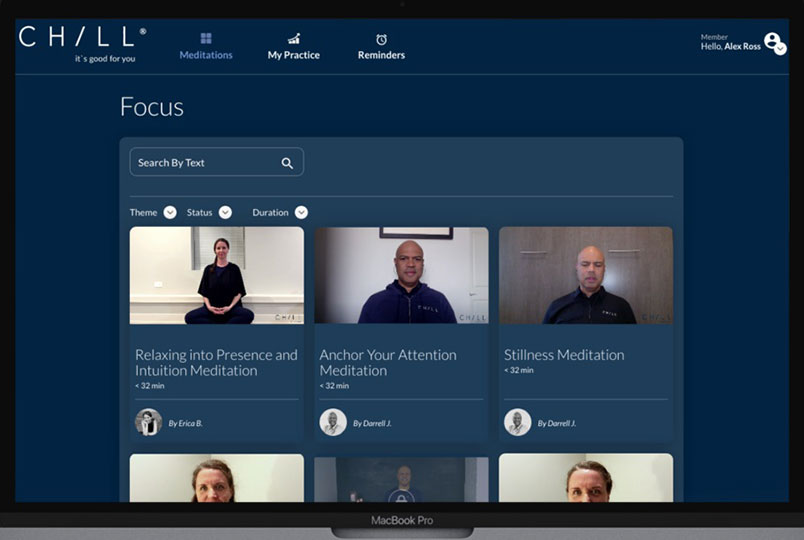
There are more features to consider including in your end product. Make sure to find an optimal balance between cost-effectiveness and functionality.
Tech Stack Needed for Meditation Mobile App Development
You will need to choose tools and programming languages to transfer the features we described above. Besides, some languages have a wider pool of experts, which affects their rates and how difficult it will be to find developers with extensive knowledge. Therefore, we propose you take a look at an average tech stack for meditation mobile app development:
- Swift for iOS
- Kotlin for Android
- React Native or Flutter for cross-platform development
- Ruby, Firebase, APNs, Sidekiq, etc., for the backend
- PayPal or Stripe for in-app payments
- Twilio or Firebase for push notifications
- AWS or Microsoft Azure as a hosting
- Google Analytics for in-app analysis
Of course, after analyzing your personal business requirements, goals, and, of course, budget, the stack for your project may turn out to be different and include tools and technologies that are not on the list. Therefore, to agree on a more accurate tech stack, it is better for you to consult with your development team, who will take over the implementation of your project.
If you are wandering where to find best meditation app development
Consider partnering with an experienced Weelorum team
Contact us7 Steps for Successful Meditation App Development
To help you in your zen-searching endeavor, we have compiled a short and succinct guide on how to create your own meditation app, comprising seven core stages:
Market Researching
Start by researching both your target audience and competitors. Your core goal here is to determine who your customers are: their demands, needs, problems, and preferences. This way, you will have a better vision of the end product your prospective clients will like.
As for competitors, they serve as the benchmark for your meditation app. You are highly advised to conduct SWOT or other forms of analysis. It will help you determine how to develop a mindfulness app by showing the successful solutions to incorporate and their failures to avoid.
Planning
Once your market research is completed, you should proceed with planning design decisions, functionalities, ways of monetization, and other concepts. Be as precise as possible while forming your specifications to alleviate misunderstandings between you and your dev team. Remember, it’s better to spend an extra week on planning rather than an extra month on reworking.
Prototyping
If you are going to build a wellness app, you may want to create an MVP first, to start gathering info and gaining traction. On the other hand, you can stick with a prototype — a visualization of how the end product will look and feel. Then, this digital draft will be finalized with fully-fledged design solutions, integration of APIs, additional features, and so on.
Designing
At this stage, your hired digital artists design the final appearance of your meditation app. The user interface must be nice and intuitive enough, so your customers don’t get lost in the interactions between fields, buttons, and pages. In the end, the design solutions will be incorporated into a digital prototype and the final product.
Developing
Also called the “programming” stage, it involves combining the design decision with the planned functionalities into the final product. Depending on your technical specifications, this phase may take weeks to be successfully completed.
Testing
Quality Assurance (QA) testing ensures the end quality of your app. If executed correctly, it will help achieve seamless and high-speed performance with very few undetected code errors. You may go with manual or automated testing only, but any guide on how to create a mindfulness app states that you should stick to the mix of both.
Releasing
In case you do not want to perform open beta testing first, your end product can already be deployed to the Google Play Market or Apple Store. Make sure that your potential customers are informed about the new software option they have to try.
These steps to create a meditation app are universal and highly recommended to follow. Also, after the launch, you need a maintenance team to support its competitiveness and relevance for many years to come.
Costs to Make a Meditation App, Unnecessary Expenses to Cut, and Turnaround Time
Let’s jump right in with calculating how much time meditation app development requires. Writing a brief usually takes one to two weeks, while researching an app’s concept and creating an MVP is more like four to five weeks. Design sprints and viability validation of planned features take roughly six to twelve weeks, with development and rapid prototyping requiring roughly the same amount of time. Deploying an app is about two weeks more. So, in total, it is about five to eight months of constant work for an average dev team.
Now, let’s review the types of activities that you can cut painlessly and with cost-effective interventions:
- Provide detailed project requirements. If you’ve already familiarized yourself with the market and written a solid concept and project specifications, your hired team will spend more time working and less time aimlessly discussing already discussed ideas.
- Go without MVP. It’s a risk we don’t recommend taking, but you may want to cut MVP development if you are sure of the viability of your concept.
- Choose the development team wisely. Since hired specialists’ efforts directly define how quickly the project will be completed, you want to pick the very best.
- Find a balance between control and letting go. The need for dev team members to spend hours in endless meetings with you will interfere with the regular workflow. But be sure not to show that you don’t care for the project either.
- Partially cut QA testing. You cannot go without testing, but you may ask to minimize some forms of manual testing in favor of automated ones.
Now let’s make some estimations on meditation app development cost. The cost-driven factors here are the time spent by developers on completing your project and their hourly rate.
If you do not have an in-house dev team, you have only two options: freelance specialists or outsourcing agencies. The latter is a more reliable option, as project managers strictly control the devs’ workflow, and you will have no problem trying to synchronize with them.
Let’s assume there are about 10–15 workers in a dev team on your project. Given a mid-scale meditation app, they will need roughly 1,000 hours to complete and release it. The infographics below show how much it will cost to develop an app based on a team hired.
What Things You Should Consider Before Developing a Meditation Mobile App
Now, let’s overview the most important things to consider before developing a meditation app.
Content Strategy
Since meditation is one of the popular practices of Hinduism, you must carefully consider a content strategy that will be fully consistent with this culture. Also, you may need to hire a separate team of designers who will create something extraordinary and completely different from existing solutions.
Marketing Strategy
As for the marketing strategy, it should be carried out taking into account the individual needs and pains of the target audience. It’s essential to understand that if, about 20 years ago, meditation was of interest to a fairly narrow circle of people, today, it’s a fairly popular activity that is practiced by many. It happened because of the desire to completely immerse in Eastern traditions or for therapeutic purposes as an alternative to regular visits to a psychiatrist. These people will have different pains and habits that you will need to consider when compiling advertising campaigns.
Monetization
Many meditation apps are monetized in the most traditional way, through subscription fees. This approach is especially effective for products with high-quality graphics that make them recognizable against the background of analogs. A few less popular methods of monetization are paid access to extra features (for example, online meditation sessions), in-app purchases, and subscriptions to the ad-free version.
Smartwatch Compatibility
If you want to implement blood pressure and/or heart rate tracking functionality for your users in your application, you will also need to consider integrating it with wearable devices.
Blending Speed and Simplicity
A common practice for any application that claims to be viral is the synergy of an intuitive interface and high performance, which would provide an instant response to user actions. This advantage is achievable when choosing an appropriate tech stack for mobile frontend development, for example, React Native, Flutter, etc.
Data Privacy
Finally, you will need to take care of ensuring the protection of user data in your application. They are formalized in the standards of the GDPR, HIPAA, and some others.
Examples of Meditation Applications That Went Viral
Let’s briefly look at some popular meditation apps you have likely heard of:
- Calm. It’s an award-winning app offering breathing and meditation exercises. How much does Calm cost? It’s one of the most expensive options, with a monthly subscription cost of $15.
- Headspace. This software is packed with guided meditation and mindfulness techniques. The Headspace meditation app costs $13 per month.
- Insight Timer. This app has an extensive library of meditations and online yoga classes to attend. Its cost is $13 per month.
- Buddhify. This app offers more than 200 meditation exercises for beginners at only $5 per month.
- Unplug. It’s basically a collection of practical meditations and relevant courses. Unplug cost is $13 per month.
They may serve as perfect reference models for further marketing research or Strengths, Weaknesses, Opportunities, and Threats (SWOT) analysis. This will be vital if you decide to create a meditation app like Calm, especially if you’re not sure what is the best one from a variety of monetization models.And if your primary concern is to make money from a meditation app, you may calculate the potential profit by multiplying, for one, the cost of a Headspace app subscription by the approximate number of its users. You’ll see that there is some solid potential for your future app if it is competitive enough.
Consider Weelorum as Your Trusted Partner in Developing Your Mobile App
Weelorum is a reliable contractor that excels in on-demand mobile app development. We’ve been around for years, delivering top-quality products for our clients. Our portfolio comprises applications that are a perfect fit for distinct niches. You can be confident that we know how to build a meditation mobile app that will outperform big players on the market.
We offer comprehensive services that cover the entire mindfulness app development process, from planning to QA testing, product launch, and continuous maintenance. We ensure you do not waste your time and money on consulting with other dev teams, as we can deliver a fully-fledged product per your requirements and preferences. Do not hesitate to contact us with your project details. We will respond shortly.